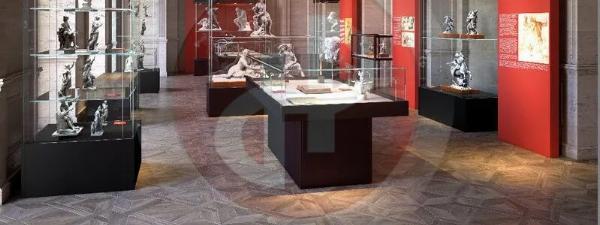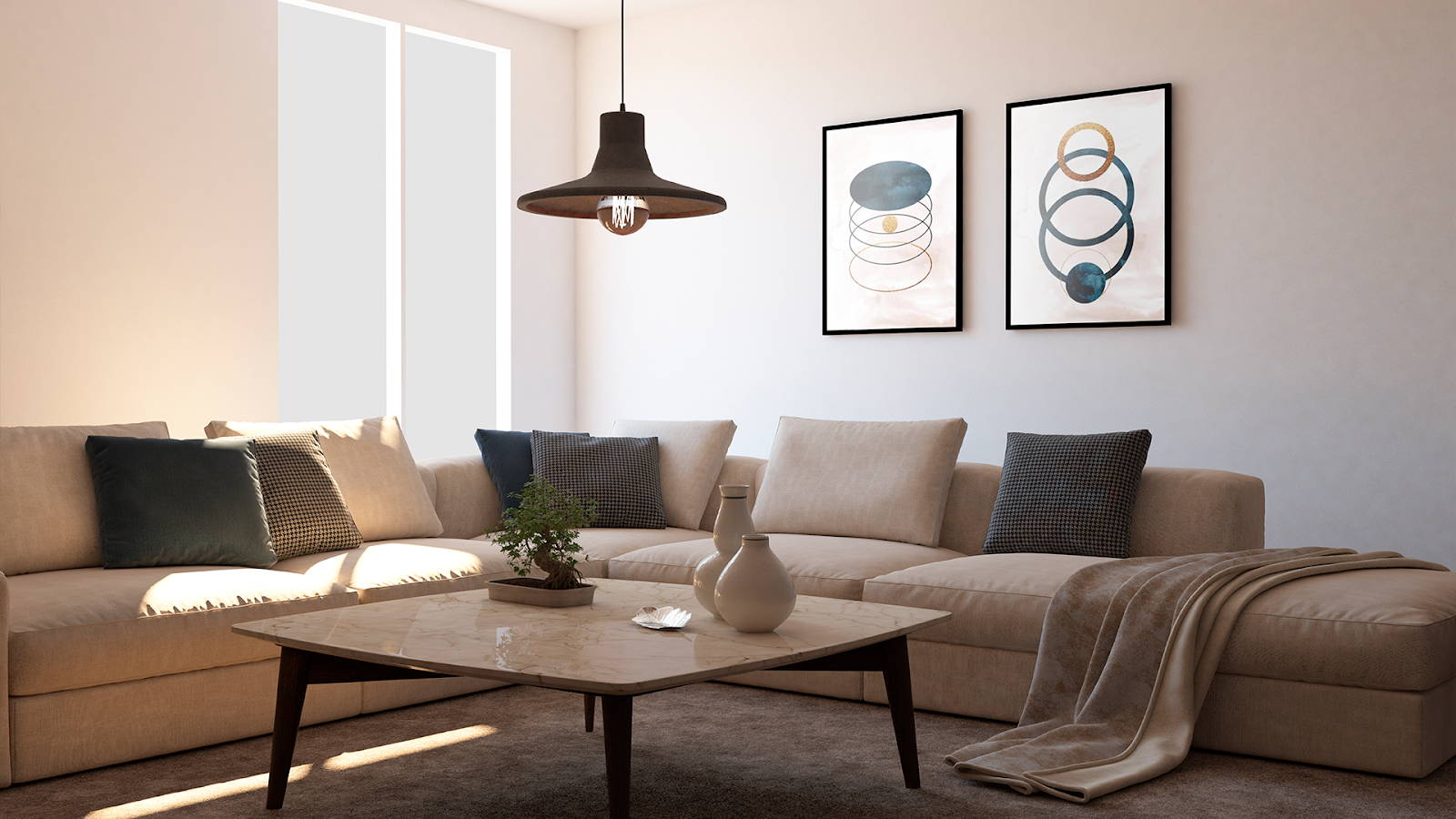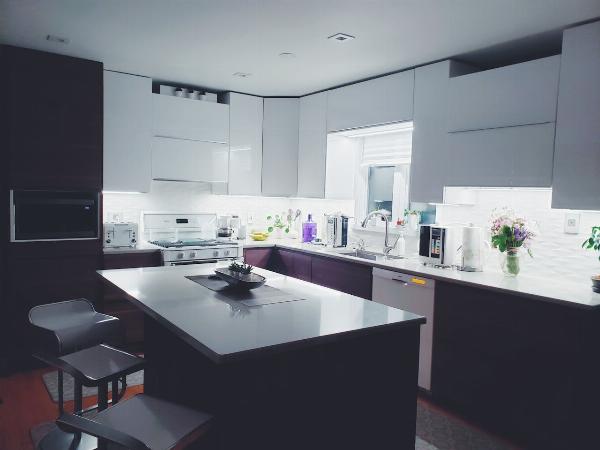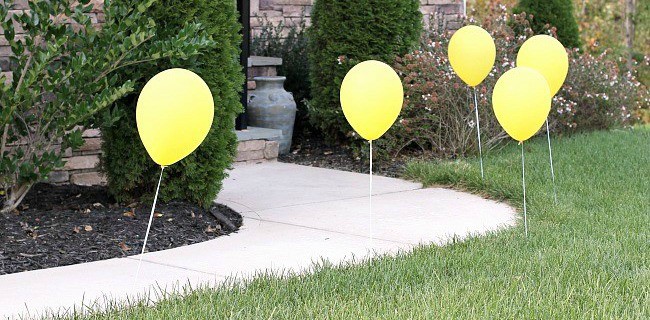The Ultimate Guide to Pool Window Types: From Architectural Statements to Underwater Sanctuaries
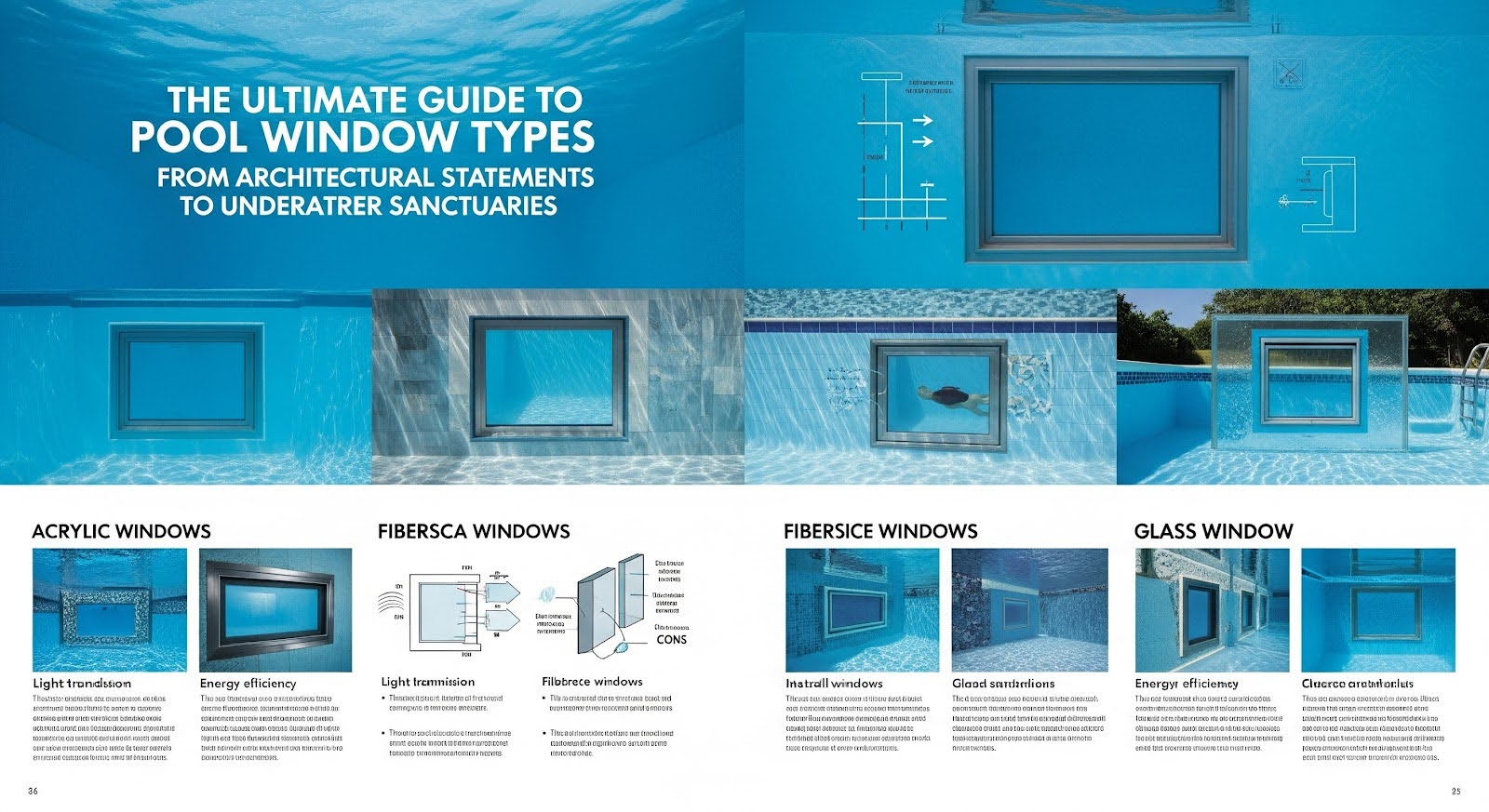
Strong 8k brings an ultra-HD IPTV experience to your living room and your pocket.
Dive into my definitive 2025 guide on the types of pool windows. I'll explore everything from fully submerged acrylic panels and infinity edges to walk-on floor windows, materials, shapes, and design considerations.
A Window to a New World
For decades, the swimming pool has been a symbol of leisure and luxury. But I've seen a new wave of architectural innovation transform it from a simple backyard feature into a breathtaking centerpiece of the home itself. At the forefront of this evolution is the underwater pool window, a design element that dissolves the barrier between interior and exterior, creating a mesmerizing connection to a serene aquatic world.
What was once a novelty reserved for five-star resorts and grand public aquariums is now a defining feature in the unique properties I work on. These clear panels do more than just offer a view; they are dynamic portals that flood lower-level spaces with shimmering, natural light, serve as living art installations, and create an unparalleled sense of wonder.
However, the journey to achieving this stunning effect begins with a fundamental decision: choosing the right type of pool window. The choice extends far beyond a simple rectangle. It involves a deep understanding of materials, positioning, function, and form. This ultimate guide for 2025 will explore every facet of types of pool windows, providing you with the comprehensive knowledge you need to select the perfect design for your architectural vision.
The Foundational Choice: Understanding Pool Window Materials
Before we explore the specific types and placements of pool windows, it's crucial to understand the materials they are made from. The material choice dictates the window's strength, clarity, safety, and, most importantly, its design potential.
In the modern era of high-performance architectural materials, cell-cast acrylic has become the undisputed gold standard for underwater windows. It's not the same as standard plexiglass; it's a highly engineered polymer with properties that make it uniquely suited for withstanding immense and constant water pressure.
Why I Choose Acrylic
Unmatched Strength and Safety: Acrylic is up to 17 times more impact-resistant than glass of the same thickness. It doesn't shatter upon extreme impact; instead, it flexes and is incredibly difficult to break, which is why I consider it the safest option available.
Superior Clarity: High-quality cell-cast acrylic boasts a light transmission of 92%, making it optically clearer than even the most refined low-iron glass. This means your view into the pool is pure, with no green tint.
Incredible Design Flexibility: This is acrylic's superpower. We can chemically bond it to create massive, seamless panels that are dozens of feet long. Furthermore, we can thermoform it into elegant curves, dramatic L-shapes, and complex geometric forms, offering near-limitless design freedom. This is why most of the architecturally ambitious acrylic pool windows you see today are made from this material.
Lightweight and Workable: Acrylic is less than half the weight of glass, significantly reducing the structural load on the pool shell and building foundation. This also makes transportation and installation more manageable.
The Classic Contender: Laminated Glass Pool Windows
Laminated glass, composed of multiple layers of glass bonded together with a clear interlayer, has been used for underwater applications for years. While largely superseded by acrylic in most new projects, it still has its place.
Exceptional Scratch Resistance: The primary advantage of glass is its hardness. It is highly resistant to surface scratching from casual contact or abrasive cleaning.
Traditional Prestige: For some clients and designers, glass carries a traditional feel of prestige.
Significant Limitations: Glass is extremely heavy and brittle. Its low impact resistance means it must be made incredibly thick to be safe, which increases weight and cost exponentially. It is almost exclusively limited to smaller, flat panels, as curving or creating seamless large-format glass windows is too complex and expensive.
Feature |
Cell-Cast Acrylic |
Laminated Glass |
Strength & Safety |
Extremely high impact resistance; does not shatter |
Brittle; can shatter under extreme impact |
Clarity |
92% light transmittance; optically pure |
High, but can have a green tint |
Weight |
Less than half the weight of glass |
Very heavy, requiring significant support |
Design Freedom |
Near-limitless shapes, curves, and sizes |
Limited to smaller, flat panels |
Scratch Resistance |
Softer than glass, can be scratched |
Extremely high scratch resistance |
Cost |
More cost-effective for large or custom shapes |
Can be prohibitively expensive for large panels |
Export to Sheets
Classification by Position & Function: The Core Window Types
This is where my design vision truly takes shape. The placement of the window determines its function, its interaction with the surrounding space, and its overall architectural impact.
Type 1 - The Classic View: Fully Submerged Wall Windows
This is the quintessential pool window. Set entirely below the waterline in a vertical wall, it provides a direct, captivating view into the pool's depths. It's the most popular type for creating a visual link between the pool and an adjacent interior room.
Primary Applications: Basement entertainment rooms, home gyms, sunken living rooms, wine cellars, and home offices.
The Experience: It transforms a subterranean room from a dark, enclosed space into a vibrant area filled with the ambient, shifting light of the water. It serves as a calming, ever-changing backdrop—a piece of "living art."
Engineering Nuances: My design must account for the full force of hydrostatic pressure, which increases with depth. The concrete rebate (the groove the window sits in) must be engineered with absolute precision.
Type 2 - The Architectural Statement: Infinity Edge & L-Shape Windows
A hallmark of contemporary, minimalist design, these windows are integrated into the weir wall of an infinity or negative-edge pool. Water flows over the top edge of the acrylic panel and into a hidden catchment basin below, creating the illusion of a vanishing edge made of pure water.
Primary Applications: Rooftop pools, hillside properties with panoramic views, and pools designed as minimalist water features.
The Experience: This type of window is as much about the view from outside the pool as it is from inside. It creates a sharp, clean, and impossibly sleek transition between the pool and the horizon. L-shaped or corner versions offer a dramatic, wrap-around cascade of water.
Engineering Nuances: This is a highly technical application requiring perfect leveling and sophisticated plumbing to ensure a smooth, even sheet of water flows over the edge.
Type 3 - The Ultimate Luxury: Pool Floor & Underwater Skylight Windows
For the pinnacle of architectural ambition, I can install a window directly into the floor of the pool. When viewed from a room or corridor below, it acts as an awe-inspiring aquatic skylight.
Primary Applications: Illuminating interior spaces directly beneath the pool, such as lobbies, hallways, art galleries, or even exclusive showrooms.
The Experience: It bathes the space below in a mesmerizing, naturally filtered blue light that ripples and dances with the movement of the water above. It creates a powerful and unexpected vertical connection between levels of a property.
Engineering Nuances: This is one of the most complex applications. The panel must be engineered to withstand not only the constant downward pressure of the water and swimmers but also potential upward pressures from the structure below. We often apply a specialized non-slip surface to the poolside face for safety.
Type 4 - The Seamless Transition: Partially Submerged & "Splash" Windows
Unlike a fully submerged window, the top edge of a partially submerged panel sits above the static waterline. It acts more like a transparent wall or railing at the pool's edge.
Primary Applications: As a safety barrier around the pool that doesn't block the view, as the wall of a sunken lounge or fire pit area adjacent to the pool, or in multi-level pool and patio designs.
The Experience: It offers a clean, contemporary look that maintains an open feel while providing a necessary barrier. It's perfect for engaging with the poolside activity without being in the water.
Engineering Nuances: While still requiring robust engineering, the pressure calculations are different from a fully submerged panel, which can sometimes allow for thinner panels or simpler installation methods depending on the design.
Type 5 - The Interior Feature: Windows Between Pools and Spas
This application creates a beautiful visual link between two different bodies of water, typically a main pool and an attached or adjacent spa.
Primary Applications: Integrated pool and spa designs.
The Experience: It allows for a seamless visual transition while keeping the two bodies of water separate, enabling them to be at different temperatures. A popular variation is the "spillover" design, where the window acts as a weir for the spa to cascade into the main pool.
Engineering Nuances: My design must account for two different bodies of water, potentially at different temperatures and with different chemical compositions, which can affect sealant and material choices.
Classification by Shape and Form: Breaking the Rectangle
The versatility of acrylic pool windows means you're no longer confined to straight lines. The shape of the window is a powerful design tool that I use to complement your pool's aesthetic.
Rectangular and Square Panels: The timeless choice. They offer a clean, classic, and unobstructed view, acting like a framed piece of art or a cinema screen.
Circular and Porthole Windows: These evoke a nautical or futuristic feel. A series of porthole windows can create a playful, submarine-like viewing gallery, while a single large circular window can act as a stunning focal point.
Curved and Serpentine Panels: This is where acrylic truly shines. A gently curving window can follow the organic contours of a freeform or lagoon-style pool, creating a completely integrated and natural look.
Custom Geometric Shapes: For the ultimate unique project, we can cut and bond acrylic panels into nearly any geometric configuration an architect can imagine, from trapezoids to complex multi-faceted designs.
Bringing It All Together: How to Choose the Right Type for Your Project
With so many options, selecting the right type of pool window can feel daunting. I've developed this simple framework to guide your decision-making process.
Define Your Primary Goal: What is the main purpose of the window? Is it to light up a dark basement (choose a Fully Submerged Window), to create a jaw-dropping architectural feature with a view (consider an Infinity Edge Window), or to provide a safe, invisible barrier (a Partially Submerged Window is ideal)?
Analyze Your Site and Architecture: The property itself will dictate possibilities. A flat, single-story property may not be suitable for a floor window, while a sloped, hillside lot is perfect for an infinity edge. The style of your home—be it ultra-modern or traditional—should influence the shape and placement.
Consult with Professionals Early: This is non-negotiable. Your architect, pool builder, and a specialized window installer should be collaborating from the earliest stages of design. Their collective expertise will ensure the vision is both beautiful and structurally sound.
Consider Your Budget: Pool windows are a premium feature. Be open about your budget with your design team so they can propose solutions that are both stunning and attainable. A simple, well-placed rectangular window can often have more impact than a complex design that strains the budget.
Prioritize Engineering Over Everything: Regardless of type, shape, or size, the single most important factor is the engineering and installation quality. An improperly installed window is a catastrophic failure waiting to happen. Always work with proven specialists.
A Window to Infinite Possibilities
For me, choosing a type of pool window is a journey of architectural discovery. It’s about more than selecting a product; it’s about defining an experience. From the classic elegance of a fully submerged panel to the breathtaking drama of a walk-on aquatic skylight, each type offers a unique opportunity to infuse your home with light, motion, and unparalleled beauty. By understanding the distinct characteristics, applications, and material advantages of each option, you are empowered to make an informed decision that will elevate your project from a simple swimming pool to a true work of art.
Ready to explore which type of pool window is right for your vision? Contact my team and me at Hammerhead Aquatics to begin your consultation.
Frequently Asked Questions (FAQs)
What is the largest possible size for a pool window? With modern acrylic bonding technology, there is virtually no limit to the length of a window panel. We can bond multiple large sheets of acrylic together on-site to create seamless walls of transparency that can be hundreds of feet long. The height is typically limited by the manufacturing size of the acrylic sheets, but panels over 10 feet tall are common. Do different types of windows require different maintenance? The core maintenance (regular cleaning with soft cloths and approved cleaners) is the same for all types. However, certain types have unique considerations. For example, infinity edge windows require regular checks of the weir and catchment system to ensure there is no debris buildup, while floor windows may need more frequent surface cleaning on the poolside to maintain their non-slip properties. Can any of these window types be installed in a saltwater pool? Yes. High-quality cell-cast acrylic and specialized marine-grade sealants are completely unaffected by saltwater chlorination systems. They will not corrode or degrade, making them perfectly suitable for any type of pool water system. How does a large underwater window affect the pool's heating cost? Acrylic is a better insulator than glass and concrete. A large acrylic window can actually be more energy-efficient than a standard concrete wall of the same size, potentially leading to a slight reduction in heat loss. The effect is generally minimal but is a positive benefit. Which type of window adds the most property value? While any well-executed pool window will add significant "wow" factor and value, types that create unique living experiences—such as a large fully submerged window that transforms a basement into a prime entertainment space or a stunning infinity edge on a view-oriented property—tend to provide the highest return on investment and market appeal.
Note: IndiBlogHub features both user-submitted and editorial content. We do not verify third-party contributions. Read our Disclaimer and Privacy Policyfor details.




